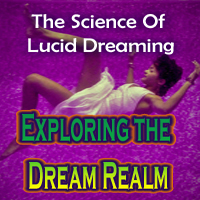



The prophetic writings of Michel de Nostredame, popularly known as Nostradamus, have fascinated and confounded people for centuries. His cryptic quatrains, collected in his magnum opus "Les Prophéties," continue to spark a diverse range of interpretations. From believers who see him as an uncanny seer to skeptics who dismiss his work as vague and open to post-event retrofitting, Nostradamus' predictions have been a source of ongoing debate.
Believers in Nostradamus often view his quatrains as an uncanny and prescient source of foreknowledge. They argue that his verses contain hidden references to significant historical events and that he possessed an extraordinary ability to glimpse the future. Believers point to specific quatrains that they claim accurately foresaw events like the French Revolution, the rise of Napoleon, and the World Wars. They believe that Nostradamus' writings offer valuable insights into the course of history and the human experience, sometimes pointing to them as a guide for decision-making in uncertain times.
Skeptics, on the other hand, maintain that Nostradamus' quatrains are highly ambiguous and can be interpreted in multiple ways. They argue that Nostradamus' language was intentionally cryptic, allowing his writings to be retrofitted to fit historical events after the fact. Skeptics emphasize that the bulk of Nostradamus' quatrains do not specifically reference historical occurrences, leaving room for selective interpretation. They contend that belief in Nostradamus is rooted in confirmation bias, where believers focus on the handful of quatrains that appear to match historical events while ignoring the majority that do not.
One aspect of Nostradamus' predictions that continues to provoke debate is their applicability to modern times. Enthusiasts have sought to link his quatrains to contemporary issues such as climate change, technology, and political developments. For example, some claim that his writings contain references to seismic shifts and environmental upheavals, reflecting concerns about climate change. Others interpret his quatrains as foreshadowing technological advancements and political developments.
Skeptics argue that these interpretations are often speculative and stretched to fit modern concerns. They emphasize that Nostradamus lived during a time when the scientific understanding of climate change, technology, and contemporary politics was vastly different from what we know today. They contend that applying his writings to modern challenges is an exercise in creative interpretation rather than a demonstration of prophetic accuracy.
In conclusion, Nostradamus' predictions and their interpretations remain a captivating and contentious topic. Believers see his quatrains as a source of profound insights into the past and the future, while skeptics emphasize the inherent vagueness of his language and the subjective nature of interpretation. The debate over Nostradamus' prophetic abilities is a testament to the enduring fascination with the unknown and the ever-present quest to uncover hidden truths in the enigmatic writings of a 16th-century astrologer and physician. Regardless of one's stance on Nostradamus, the discussion of his predictions and their interpretations continues to inspire curiosity and contemplation about the mysteries of the future.
Exploring Self-Hypnosis Techniques
 Self-hypnosis, also known as autohypnosis, empowers individuals to enter a hypnotic state on their own, without the assistance of a hypnotist. It can be a valuable tool for relaxation, personal growth, and addressing specific challenges. Here are some key self-hypnosis techniques to consider:
Self-hypnosis, also known as autohypnosis, empowers individuals to enter a hypnotic state on their own, without the assistance of a hypnotist. It can be a valuable tool for relaxation, personal growth, and addressing specific challenges. Here are some key self-hypnosis techniques to consider:
Find A Quiet Space: Begin by selecting a quiet, comfortable space where you can relax without distractions. Whether it's a cozy chair, a soft carpet, or even your bed, the key is to ensure you won't be interrupted during your self-hypnosis session.
Set An Intention: Determine the purpose of your self-hypnosis session. What specific issue or goal would you like to address or achieve? Having a clear intention will guide your self-hypnosis process.
Relaxation And Breathing: Sit or lie down in a comfortable position. Close your eyes and take a few deep, cleansing breaths. With each exhalation, release tension and stress. Slow, deep breathing can help induce a state of relaxation.
Visualization: Begin to visualize a calming and serene place. This could be a beach, a forest, or any location where you feel at peace. Imagine the sights, sounds, and sensations of this place. Visualization helps deepen your relaxation.
Progressive Muscle Relaxation: Progressively tense and then release the tension in each muscle group in your body, starting from your toes and moving upward. This can enhance your state of physical relaxation.
The Art Of Dream Interpretation
 Symbols In Dreams: Dreams often manifest as a collage of symbols, each with its unique significance. Common dream symbols may include animals, objects, people, and landscapes. Interpretation involves associating these symbols with their emotional and psychological connotations.
Symbols In Dreams: Dreams often manifest as a collage of symbols, each with its unique significance. Common dream symbols may include animals, objects, people, and landscapes. Interpretation involves associating these symbols with their emotional and psychological connotations.
Emotions In Dreams: Emotions play a crucial role in dream interpretation. The feelings experienced within a dream can reveal the dreamer's emotional state, unresolved conflicts, or desires. Analyzing the emotional content of dreams can be a key to self-awareness.
Freudian Interpretation: Sigmund Freud, the father of psychoanalysis, proposed that dreams are a window into the unconscious mind. He believed that dream symbols often represent hidden desires and unresolved conflicts. Freudian dream interpretation is centered on the idea of wish fulfillment.
Jungian Interpretation: Carl Jung, another influential psychologist, introduced the concept of archetypes into dream interpretation. Jung believed that dreams reflect universal themes and symbols. Jungian dream analysis involves exploring the collective unconscious and personal symbols.
Cultural And Personal Context: Dream interpretation is deeply influenced by cultural and personal context. What a symbol means to one person may vary significantly from its interpretation in another culture or for a different individual. Personal experiences, memories, and beliefs shape dream analysis.
Embracing Sustainability And Environmental Responsibility
 2. Energy Efficiency
2. Energy Efficiency
Energy efficiency is a fundamental pillar of a clean energy future. It involves the optimization of energy use across various sectors, including residential, commercial, and industrial settings. Energy-efficient technologies, improved building designs, and sustainable practices reduce energy waste, lower energy bills, and cut greenhouse gas emissions.
3. Electrification Of Transportation
Transitioning from gasoline and diesel-powered vehicles to electric vehicles (EVs) plays a pivotal role in reducing carbon emissions. EVs produce zero tailpipe emissions, significantly lowering the carbon footprint of transportation. The expansion of EV charging infrastructure and the development of advanced battery technologies are driving this transformation.
4. Energy Storage Solutions
Energy storage technologies, such as advanced batteries and grid-scale storage, enable the integration of intermittent renewable energy sources into the power grid. These solutions ensure a reliable and consistent energy supply, regardless of weather conditions or time of day.
5. Carbon Capture And Utilization
Carbon capture and utilization (CCU) technologies capture carbon dioxide emissions from industrial processes and convert them into valuable products.






Unraveling The Mysteries Within
 Emotions, too, hold a place of great significance in the realm of the human mind. The mind can generate a vast spectrum of emotions, from love and joy to fear and sorrow. The secrets of emotional processing and the intricate neural pathways that govern these feelings continue to be a focal point of scientific research. Understanding the complexities of emotional intelligence and regulation remains a challenge, but it is a crucial step toward a deeper comprehension of the human psyche.
Emotions, too, hold a place of great significance in the realm of the human mind. The mind can generate a vast spectrum of emotions, from love and joy to fear and sorrow. The secrets of emotional processing and the intricate neural pathways that govern these feelings continue to be a focal point of scientific research. Understanding the complexities of emotional intelligence and regulation remains a challenge, but it is a crucial step toward a deeper comprehension of the human psyche.
Memory, another cornerstone of the human mind, conceals its own set of secrets. The brain's capacity to store and retrieve vast amounts of information is awe-inspiring, and yet, the mechanisms of memory formation and recall remain partially shrouded in mystery. Researchers are constantly exploring the brain's intricacies to uncover the secrets behind how we remember and why we forget.
The human mind also holds the power of perception. It processes the sensory input from our environment, shaping our view of the world. Perception is not a passive process; it involves the mind's interpretation of sensory data. The study of perception has revealed the mind's role in shaping our understanding of reality and how it can be influenced by our past experiences, beliefs, and expectations.
Consciousness itself is one of the most profound secrets of the human mind. While we experience it every day, the nature of consciousness and its origins remain a subject of ongoing debate and exploration. Understanding how and why we have subjective experiences, thoughts, and self-awareness is a question that continues to challenge the brightest minds in neuroscience and philosophy.
 Reality Checks: To enhance dream manipulation skills, individuals often perform reality checks throughout the day. This practice involves questioning the state of reality by examining one's surroundings, body, or reality itself. When this habit carries over into the dream state, it can trigger lucidity.
Reality Checks: To enhance dream manipulation skills, individuals often perform reality checks throughout the day. This practice involves questioning the state of reality by examining one's surroundings, body, or reality itself. When this habit carries over into the dream state, it can trigger lucidity.
Setting Intentions: Before falling asleep, dream manipulators set specific intentions for their dreams. This might involve deciding to confront a fear, explore a particular scenario, or engage in creative problem-solving. The subconscious often responds to these intentions during the dream.
Mnemonic Induction Of Lucid Dreams (MILD): MILD is a technique that involves repeating a mantra or affirmation before sleep, such as "I will become aware that I'm dreaming." The act of self-suggestion increases the likelihood of becoming lucid within the dream.
Visualization: Visualization techniques are powerful tools for dream manipulation. By visualizing a desired dream scenario before falling asleep, individuals can increase the chances of experiencing that scenario in their dream.
Dream Incubation: Dream incubation is a technique in which individuals set a specific question, problem, or scenario they want to explore in their dreams. By focusing on this intention, they guide their dreams in the desired direction.
Character Interaction: Skilled dream manipulators can engage with dream characters, initiating conversations or activities that lead to new experiences and insights within the dream.